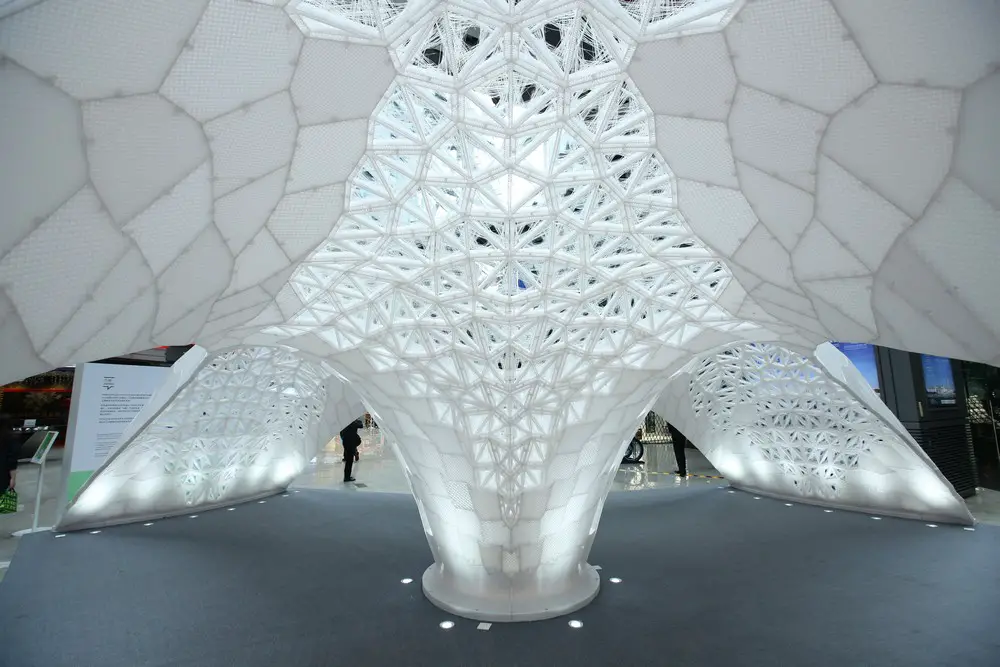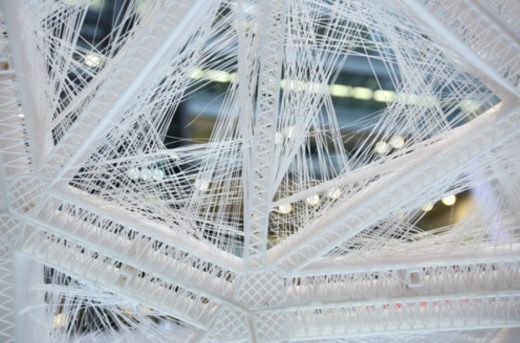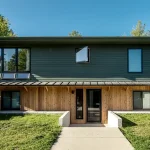3D Printed Homes, House Design, Printing Technology, Architecture Images
3D Printed Houses Beijing
Repeated Geometry – Vulcan Pavillon, Beijing Design Week 2015 + other projects
17 Aug 2016
3D Printing Technology
3D Printed Houses – The Future of Home Building?
3D Printed Houses News
Will we all be heading to a printer rather than a builder in the future when we need a new home?
Article first published on Houzz
Eva Zimmermann, Houzz Contributor
3D printing is one of the most talked-about technologies of this decade. Some consider it to be the beginning of the third industrial revolution, while others point out the constraints of the technique. So how innovative is 3D printing, and is it the way we’ll design our homes in future? Below, we explore the status of 3D printing worldwide, find delicate resin pavilions in China, classical design-inspired concrete beams in Italy and buildings that ‘think’ in Germany.
What is 3D printing?
The technology of 3D printing was invented by Chuck Hull, an American engineer. He initially called the new process stereolithography, and patented it in 1986. It was a technique that linked molecules using laser light to form polymers into solid shapes.
When it was introduced, industries such as automotive manufacturing used it for what became known as rapid prototyping. The advantage was that no moulds were required, and there was no waste, unlike in milling, when a shape was cut and the material around it was discarded. In 3D printing, objects are constructed layer by layer. The idea comes from printing with ink, which lies on top of the paper. If the process was repeated time and again, but with more solid materials and a slight shift to create movements in the layers, a 3D printing effect would take place.
Materials now used in the process range from the more common synthetic resins and plastics to steel and concrete. Some are experimenting with natural materials, such as bamboo, wood and natural stone waste. Small versions of 3D printers are now finding their way into designers’ studios, schools and private homes.
But some synthetic materials used for printing are suspected of emitting toxins. In the course of an experiment, a doctoral student at the University of California at Riverside found that her zebra fish were dying in the container she had printed. A research team that then tested the products of two of the most common 3D printers discovered the toxicity levels of both were quite alarming. Researchers worldwide are working to find safe materials and techniques and caution that the printers should be used in well-ventilated places.
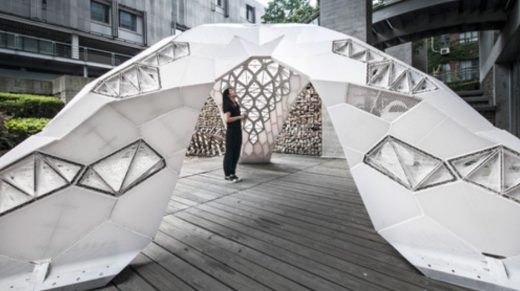
Taking 3D printing to extremes in China
China is a country where superlatives are considered signs of progress. So it should come as no surprise that the largest printed architectural object was created in China. Vulcan, a pavilion (seen in this image), was revealed to visitors from all over the world during Beijing Design Week 2015. It was designed by architects Xu Feng and Yu Lei. However, it was not printed all in one piece. Its curved form was assembled from 1,023 individual components; it is 8.08m long and 2.88m high, all produced by a printer.
Although this achievement was rewarded with an entry in Guinness World Records, it also shows the limits of today’s 3D printing technology: to print entire houses, the printers would have to be gigantic or run on huge scaffolds. Scale is the reason why 3D printing is still in its infancy where architecture is concerned.
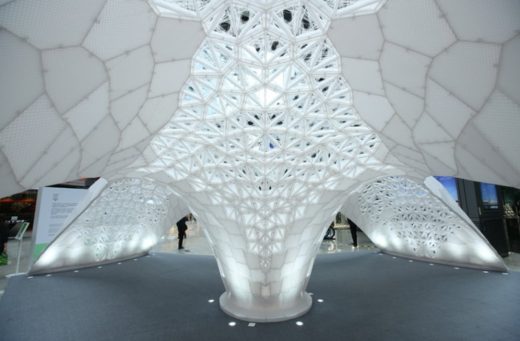
Going for the full house…
In Amsterdam, though, DUS Architects is in the process of printing a canal house, layer by layer, using bioplastics made from 80% vegetable oil. The project, which aims to be renewable and sustainable, is slated to be finished in 2017.
‘There are also houses being printed in China,’ says Dr Jane Burry, associate professor at the Spatial Information Architecture Laboratory at RMIT in Melbourne, ‘though [they are] relatively crude at this stage.’
She is referring to a project by the Chinese company Winsun, which has printed houses made from concrete and recycled construction materials in China. It’s one of the most cited examples in this context. The manufacturer reports considerable savings: 60% less material, 70% less time and 80% less labour compared with average house construction. The printer is set up in a factory and has gigantic proportions: 6.1m tall x 10.1m wide x 40.2m long.
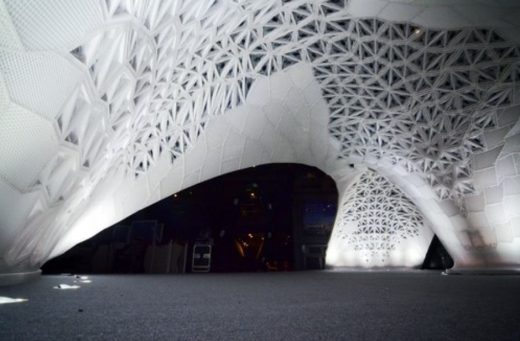
…or knocking the construction down
‘The question is how you define 3D printing,’ says Benedikt Hotze, media and communications consultant for the Bund Deutscher Architekten (Association of German Architects). When asked for his personal expert opinion about 3D printing in architecture, he is less than euphoric. ‘The idea to print houses all in one go is a childish fantasy; it’s not going to happen. What will happen, however, is that we will have digitally controlled manufacturing of building components in a factory that will then be transported to the construction site. The often-cited examples from China seem to me to be excesses in the competition for the most attention.’
Professor Burry from RMIT says, ‘The true strength of printing is for custom design and variety rather than mass production. So at RMIT we’re looking closely at metal printing and how optimised structural node designs can be custom-printed for certain points in the structure of a building. By reducing the materials in the node, you can reduce the weight and substructure to support the building and save energy. This is a huge advantage of 3D printing as it can be very costly to produce these structures by other means, such as casting, and you could even print one-off pieces for repair and restoration work.’
Hotze regards the enthusiasm for printed houses with pragmatism, ‘It reminds me of manned space travel – it’s doable but not necessary. To this day, Omega creates the advertising for its Speedmaster watch around the fact that it was on the moon.’
The British architecture firm Foster & Partners, together with the European Space Agency, might disagree with Hotze about travels to the moon, however, as they are developing ideas for 3D printing a lunar base station for a project called Lunar Habitation, which they hope will be completed as early as 2024.
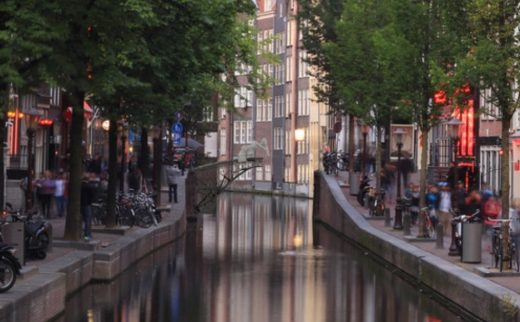
Back on earth…
Though not quite as ambitious as the moon base project of Foster & Partners, the bridge construction project in Amsterdam, on which designer Joris Laarman is collaborating with MX3D, a developer of steel printers, and CAD developer Autodesk, is certainly a prestigious one.
Even though this image suggests the steel bridge is being constructed on-site on the Oudezijds Achterburgwal canal, it is really being manufactured inside a hall. The bridge has been printing at MX3D since autumn 2015. It’s a trial and error process that’s attempting to find ways to print the entire structure in one piece. Printing is scheduled to be completed by 2017. That’s when the first fully functional printed steel bridge is slated to be installed on-site – another race for a world record.
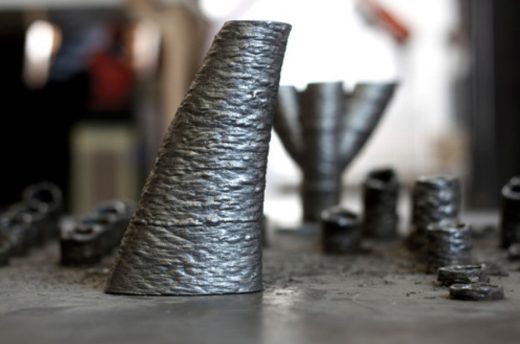
This little sample shows what the entire steel bridge will look like once 3D printing is done. Two advantages of printing steel are that the shapes can be more organic and free-flowing than in normal production and that moulds aren’t needed, which reduces the cost.
Read expert advice on how to design a loft that’s more than a box on a roof
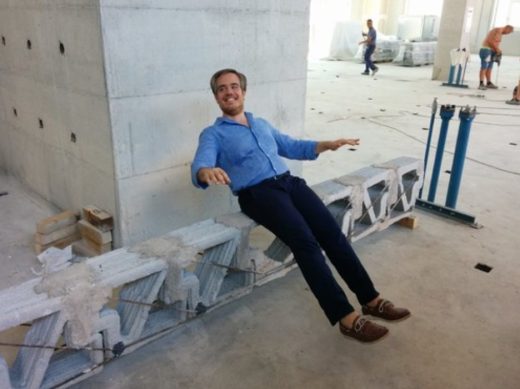
Printing concrete with grace in Italy
In a collaboration between the University of Naples and cutting-edge technology company WASP (World’s Advanced Saving Project), the beauty of Italian architecture is combined with a modular building technique.
WASP was founded in 2012 by Italian entrepreneur Massimo Moretti and is pushing sustainable construction methods and in-house fabrication processes. With the University of Naples, they have developed a concrete support that could be printed on a 3D printer and used in building projects.
Domenico Asprone (pictured), assistant professor at the Department of Structural Engineering University of Naples, was the construction engineer for the project. ‘Our idea is to print a curved concrete beam optimising the amount of concrete and reducing the costs for complex formwork systems,’ he says. ‘The approach is based on the partition of the beam into concrete segments to be printed separately and then assembled into a unique monolithic element, along with the steel reinforcement system, as in a Lego structure. The approach is expected to facilitate the production of curved elements with variable cross-sections, compared to the common concrete casting process, and will therefore boost the creativity of structural engineers.’
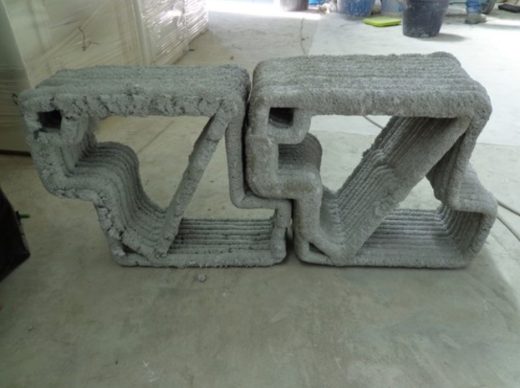
‘The beam is printed in individual pieces. Once the concrete pieces are hardened, reinforcing steel bars (rebars) are externally installed to strengthen the beam and lock the pieces into a monolithic element,’ Asprone says.
In the meantime, the WASP experts have already printed a 3.2m reinforced concrete beam. For this purpose, they used a lower viscosity concrete. ‘We are standing on the shoulders of more than one century of concrete technology history. We are merely adapting this technology to 3D printing. We use cement and other binders, such as ecofriendly clay-based versions or geopolymers that are waterproof and can be used for waste-water systems.’
The next step for WASP? There are plans for printing a pedestrian bridge similar to the one Laarman is working on in the Netherlands, but this one will be made of concrete.
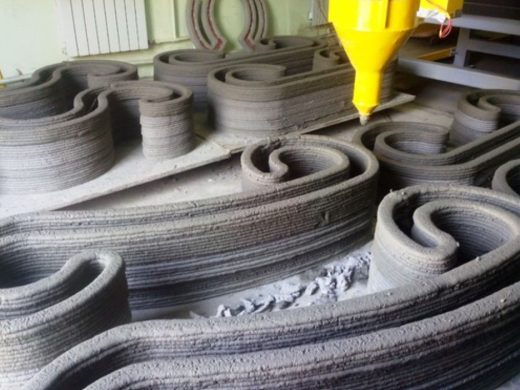
Ornamental details from Russia
Just like Italian company WASP, Russian manufacturing firm Specavia uses 3D concrete printers in the construction of buildings. Its main clients are building contractors, and CEO Alexander Maslov talks about the complex building components his printers are already able to create.
‘The 06044 series printers can print individual building components with a length of up to 12.3m. It’s quite sufficient for printing complex shapes for all kinds of towers, arches, dwarf partitions and other decorative elements for a house. We’ve been printing various decorative landscaping elements, even a small pond and a children’s town. The printer can be used for printing stoves, fireplaces, barbecue sets and other fireproof products using kaolin mixes,’ he says.
Check out how a reconfigured staircase can unlock your interior
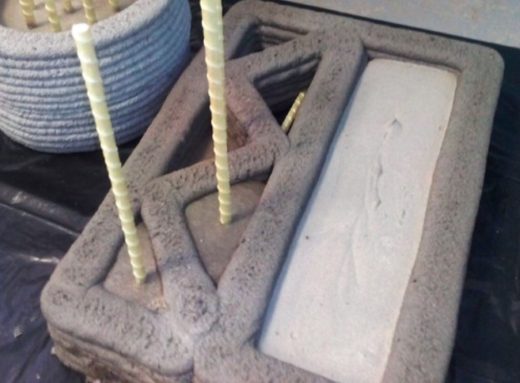
Maslov says that, from a technical standpoint, it would be possible to print entire houses, but he remains pragmatic. ‘Obviously, we’re talking about printing individual components and assembling them on-site,’ he says. ‘The advantage of such a method is that you can do the manufacturing indoors, eliminating changes in temperature, humidity etc. The disadvantages are cost of transportation and increased construction times. Plus, assembling the individual items is a technological process that requires further reinforcement solutions.’
In spite of seeing himself as a pragmatist and not thinking too far ahead, Maslov’s assumption is that building techniques like the ones he’s employing now will be integrated into regular construction within a few years.
An innovative take on the future from Germany
Professor Achim Menges is head of the renowned Institute for Computational Design at Stuttgart University. The real-world opportunities for the new technology are already inherent here and in his research projects. He knows innovation is an invitation to leave behind old thought patterns. ‘First you use the new technology to build objects in the traditional way, as demonstrated by the example from China, where they are building conventional houses with 3D printers. Designs and constructions that are genuinely specific to the new process are not created until the second step.’
This means, for example, that ‘3D printing will make geometric complexity in building construction possible without much additional effort or expense. This knowledge in turn informs the design process,’ says Menges. Just like the development of the new 3D and static software changed the aesthetic of architecture, so could 3D printing.
Furthermore, printed components can physically have more layers.
‘We will have the possibility of creating very complex building components with gradient characteristics. Components could be soft on one end and hard on the other due to different printing materials being used in the course of the printing with a multi-material printer,’ Menges says.
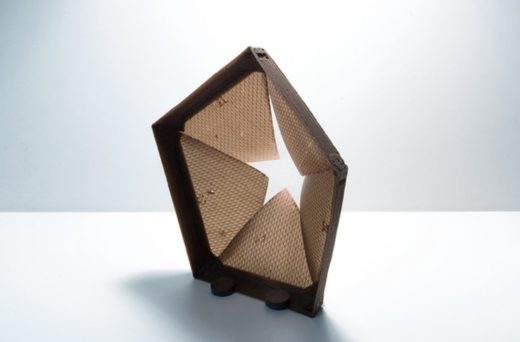
Buildings that can think?
Right now, Professor Menges is developing building components in Stuttgart that can change shape, mirroring nature. ‘Just think of pine cones: when they are on the tree, their scales are closed; once they fall to the ground and dry up, the scales open. We can imitate this effect with 3D printing by using different materials, soft and hard, that react differently to environmental conditions such as humidity. In this way, we can fabricate building components that adjust to climate changes without the need for mechanical or digital control mechanisms.’ (This image shows such a prototype.)
Many people even take this idea one step further. ‘There is talk about Industry 4.0, which is equivalent to a fourth industrial revolution,’ Menges says, ‘an interpenetration of the material and the digital world by means of so called cyber-physical systems.’ These connect software with mechanical and electronic components via a data infrastructure like the Internet (the catchphrase is the ‘Internet of Things’). This sort of building technology would change the way we live, and our daily world, completely.
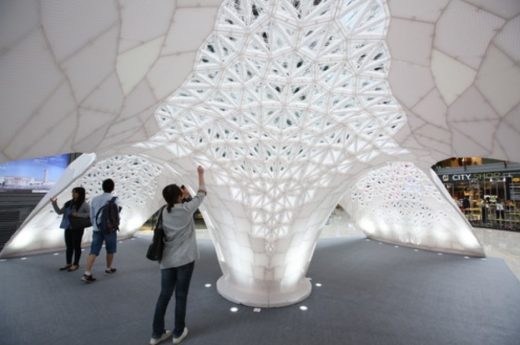
So should we feel euphoria or caution?
Fans of the new technology put us on the threshold of a new era. If the technology is shared and becomes accessible to everyone – what’s known as open hardware – 3D printing could potentially change the world. Product fabrication could move into the living room and there would be less pollution due to the reduced need for transportation of goods.
But as far as architecture is concerned, the size of the projects continues to be an obstacle and the materials needed in the building industry are still being developed for printing. Safety issues also need to be addressed.
Dr Jane Burry therefore proposes another competitor for the building construction industry. ‘I imagine 3D printing coming in parallel with other technologies in the next 10 years, but I would put my money on solid timber construction as the next big trend.’ Cross-laminated timber is like plywood on steroids, according to Burry, a bit like concrete in that it can be used to build the whole structure of a house in slab form, rather than having to build an internal frame. This means homes can be built faster and potentially cheaper. ‘That’s not to say these technologies can’t progress in parallel,’ she adds. ‘Indeed, we can even 3D print with timber-based material.’
Much remains to be explored. We might not be 3D printing homes on the moon any time soon, but the technique will definitely make more complex geometries possible, with building components that can adapt to climate changes, as well as building elements that are assembled from a variety of materials. We can’t wait to see what the next development will be.
Location: Beijing, China, Asia
3D Printed Design
3d Printed Light
Design: Dr. Margot Krasojevic
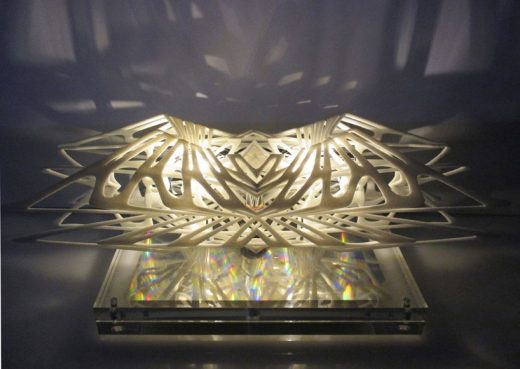
image from architect
3d Printed Dichroic Light Diffuser – 23 Feb 2016
3D-printed Polymer Building
Design: Skidmore, Owings & Merrill (SOM) architects with Oak Ridge National Laboratory
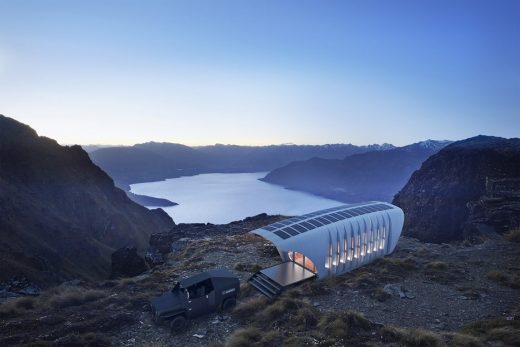
image from architects
3D-printed structure by SOM – 1 Feb 2016
3D Printed Moon Base
Design: Architecture Et Cetera (A-ETC)
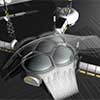
pictures from architect
3D Printed Moon Base Concept – 21 Feb 2013
Dutch EU building 3D-printed Facade
Building with 3D-printed bioplastic facade
Architectural Concept Designs
Wave Tower Design

picture from architect
image © Stephan Sobl
Metropolitan Vertical Theme Park
picture from architect
Indigo Tower Concept
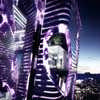
picture from architect
Comments / photos for the 3D Printed Houses Beijing, China – page welcome
Website : Architecture Walking Tours

